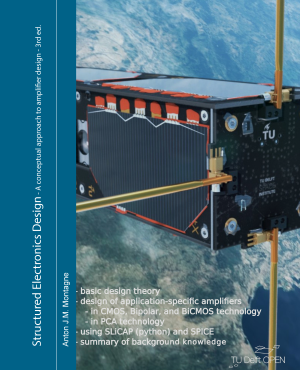Implementation of negative feedback#
Until now, we have discussed the principle of negative feedback: sensing of the load signal of interest, conversion of the sense result into a copy of the source signal and application of a controller that minimizes the difference between the source signal and its copy derived from the load. There are several ways to implement this. We have already mentioned nonenergic feedback, passive feedback and active feedback. In this section, we will give a brief description of techniques and terms used. These techniques will be discussed in more detail in the following sections.
Feedback networks#
Since the controller is to nullify the error between the input signal and the feedback signal, feedback networks predominantly determine the properties of the feedback amplifier. For example, their noise performance, signal transfer sign, and port isolation strongly depend on the type of feedback network applied. Considering this, it makes sense to classify feedback amplifiers based on their type of feedback network. Below is a list of feedback amplifier classes based on the type of feedback network.
Nonenergic feedback amplifiers
Nonenergic negative feedback amplifiers use feedback elements that solely consist of nonenergic network elements. It will be shown that the noise performance and the power efficiency of these amplifiers is not affected by the feedback network. Theoretically, the best possible performance can be expected from this class of amplifiers. They will be discussed in section Nonenergic feedback.
Passive feedback amplifiers
Although nonenergic feedback theoretically gives the best possible performance, practical nonenergic feedback elements such as transformers are far from ideal, while gyrators can only be realized with the aid of active circuits. For this reason, the use of passive feedback networks is of more practical importance. Passive feedback amplifiers with either dissipative or non-dissipative feedback elements will be discussed in section Passive feedback.
Active feedback and balanced feedback amplifiers
Not all amplifier types can be realized using passive feedback. In section Passive feedback, we will see that the sign of the transfer of a passive feedback amplifier does depend on the type of transfer. Moreover, with passive feedback networks, isolation between the input port and the output port of the amplifier cannot always be accomplished. In cases in which nonenergic feedback or passive feedback techniques are inadequate for the design of the desired amplifier type, other implementations of negative feedback can be used. Aside from taking one’s refuge in indirect feedback techniques, one could also consider the application of:
Active feedback
Active feedback amplifiers use one or more active networks as a feedback element. They will be discussed in section Active feedback.
Balanced feedback
Balanced feedback amplifiers can be used for the design of amplifier configurations with their input and/or output port floating with respect to the ground. These amplifier types will be discussed in section Design of balanced amplifiers.
Ideal gain of a feedback amplifier#
The ideal gain of a negative feedback amplifier is defined as its source-to-load transfer when all error amplifiers have been replaced with nullors. During the conceptual design of negative feedback amplifiers, we will always use nullors as controllers. As a matter of fact, we will use nullators and norators. The nullators determine which voltages and the currents need to be nullified and the norators provide the dependent currents to satisfy these conditions.
Negative and positive feedback#
In feedback configurations with nullors as controllers, we cannot speak of negative or positive feedback. We just have feedback with an instantaneous error amplifier that provides an infinite available power gain, always yielding zero error signal at the input of a nullator. In fact, the nullor is the\emph{ ideal controller concept}, but it cannot be realized in practice.
The available power gain of a real-world error amplifier will not be infinite and will suffer from speed limitation and nonlinearity. Hence, in practice, the error signal will not be zero and there only exists a stable situation in case of corrective or negative feedback. Negative feedback requires a negative loop gain. A formal definition of the loop gain will be presented in Chapter Modeling of negative feedback circuits. A negative loop gain requires a negative sign in the transfer from the positive output port quantity of the error amplifier to the positive input port quantity of the error amplifier. Or, in other words, the sign of the product of the gain of the controller and the transfer of the feedback network should be negative. Fig. 222 shows the quadruple loop negative feedback amplifier of which the nullor-based concept was shown in Fig. 216. The nullor is replaced with a controller with a finite available power gain and all feedback loops establish negative feedback.
Although we do not have negative feedback or positive feedback using nullors, we will use the term ‘negative feedback’ throughout this chapter. This is because it is our aim to implement corrective feedback. We will speak of positive feedback, if it is our intention to implement non-corrective feedback.
If negative and positive feedback are combined, a stable situation is only obtained if the negative feedback dominates over the positive feedback.
Positive feedback with a loop gain less than unity does the opposite as negative feedback:
Parallel sensing of the load quantity or parallel comparison with the source quantity increases the corresponding port impedance.
Series sensing of the load quantity or series comparison with the source quantity decreases the corresponding port impedance.
Other negative effects of positive feedback will become clear in Chapter Modeling of negative feedback circuits.
Positive feedback with a loop gain larger than unity results in bistable behavior or in oscillations.
